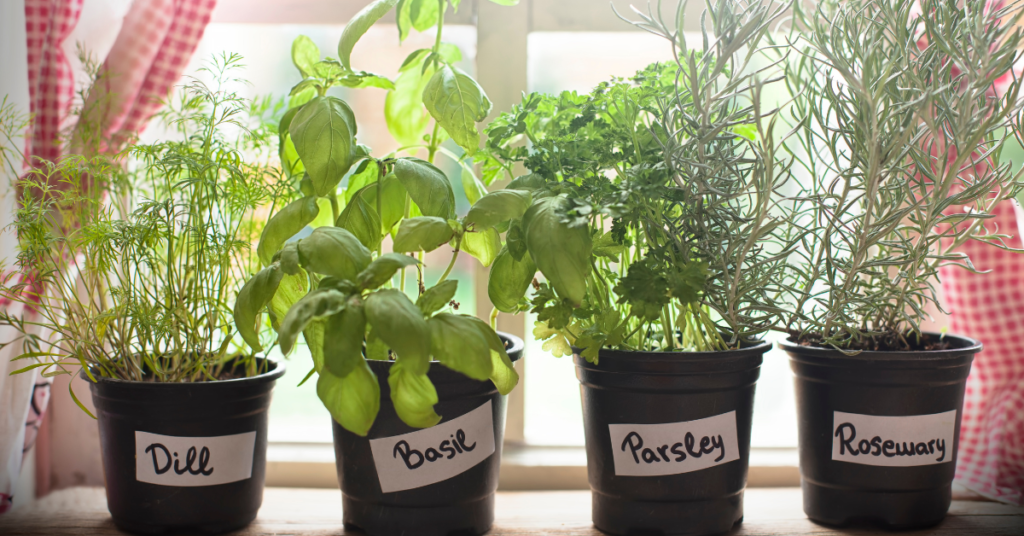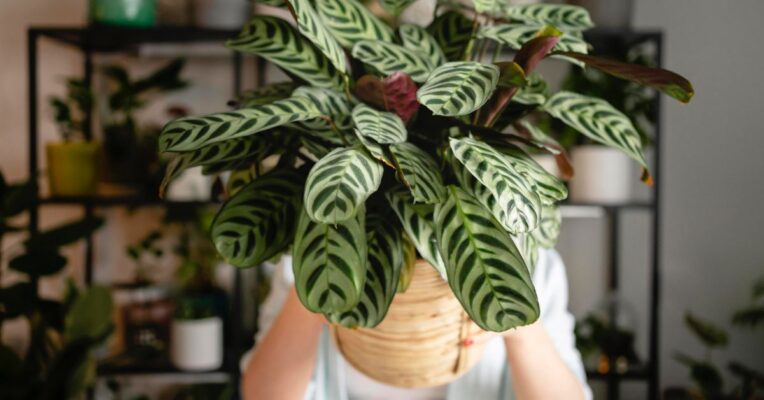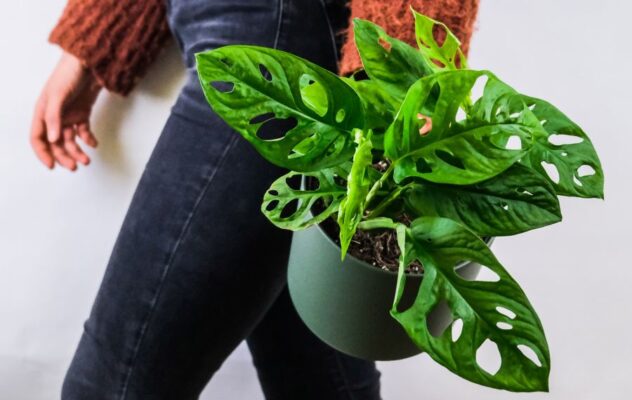The monstera family has easily become of the world’s most loved house plant species with the Monstera Adansonii Variegata being a plant community favorite. While there are many different types of monsteras, did you know there are a handful of Monstera Adansonii varieties too? If you’ve got one or two, you’ll know these beautiful plants are generally fuss-free and are an excellent decor piece to any living space. Get to know the varieties and let’s grow your collection!
First, what is Monstera Adansonii?
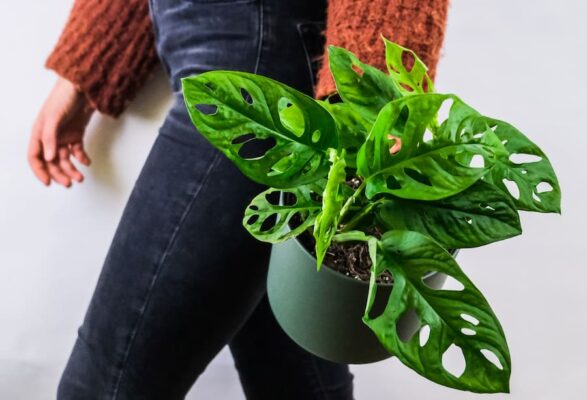
The Monstera Adansonii also known as Adanson’s Monstera or more commonly as the Swiss Cheese Plant or Monkey Mask is a lovely species native to Central or South America. It’s an evergreen aroid and vining plant species, recognized by its oval shaped leaves with fenestrations or holes that look like Swiss cheese. Its unique formation has made it one of the most common indoor plants, especially across America and Asia with particular attention to the Monstera Adansonii Variegata that gained popularity and was a trending topic in 2019.
Here are some of the best Monstera Adansonii varieties:
1. Monstera Adansonii Round Form and Narrow Form
Possibly the most common of them all and easily found in most countries, this plant has become a popular house plant. It has oval leaves with beautiful fenestrations and is noted as ’round form’ thanks to its leaf shape and needed to be identified as such because it has a sibling known as the ‘narrow form’. While almost similar in nature, they make up the 2 most common Monstera Adansonii varieties in the world.
You can identify the round form and narrow form by the shape of their leaves and the stems. Round form has thicker, solid stems and the narrow form has thin, vine-like stems. They’re also the most affordable varient in the market.
2. Monstera Adansonii Variegata or variegated Monstera Adansonii
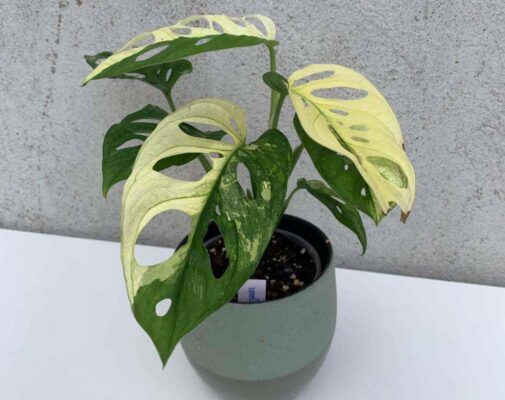
Just as its name suggests, Monstera Adansonii Variegata is the variegated version of the common Swiss Cheese Plant! It’s similar in shape, size,and growth habits but is distinctively different in appearance with its variegation with big chunks of white or light yellow on the leaves. The white parts are random and not uniformed across one plant from the next, so you never know what your plant will grow to look like; it’s a lovely surprise.
Fun fact: did you know in horticulture, variegation in plants is not a bonus but instead, it’s recognized as a genetic mutation? Variegation happens when a plant has insufficient chlorophyll; the substance that contributes to the green pigment, resulting in white or yellow (white + green) leaves instead. Mutation or not, they’re beautiful and loved by all.
3. Monstera Obliqua
The group of plants that make up the monstera adansonii varieties are simply monstera plants that have similar characteristics and appearances. While the Monstera Obliqua is similar in character, it has a distinct appearance that makes it easily identifiable!
Firstly, it has much longer fenestration or holes; in fact it has more holes than it does leaf! Secondly, it’s the only variety that has paper-thin leaves, making it delicate to the touch and requires a more gentle approach to your regular monstera adansonii care routine. The combination of its long, narrow holes and thin texture gives it a crumpled, messy look, so it’s easy to identify from the rest.
Appearance aside, the Monstera Obliqua comes with a hefty price tag! If you didn’t pay an insane price, chances are, you have one of the more common Monstera Adansonii varieties!
4. Monstera Adansonii Laniata
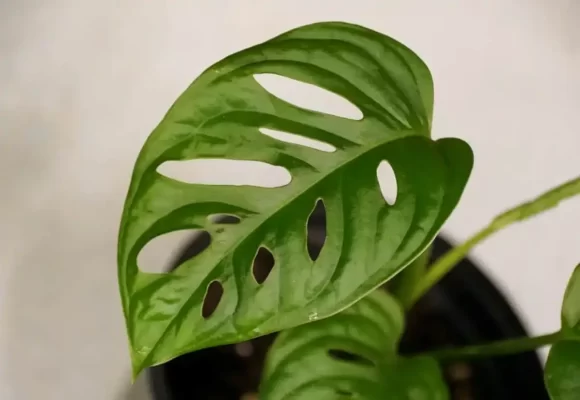
Have you heard of Monstera Laniata? It has a lovely, shiny shade of green and fenestrations that go up towards the middle of the leaf’s stem; unlike the regular Adanosii [round form] that has its holes scattered across the leaf. When it comes to rarity, there are countless debates on whether it’s common or rare. The debates could stem from the country or region you’re from and based on being able to distinguish this variety from another. Personally, the conversation is irrelevant; if you enjoy the plant and it’s accessible to you, add it to your collection!
5. Monstera Acuminata
Another species to mention in the list of Monstera Adansonii varieties is the Acuminata. Easier to pronounce but often forgotten! This variety has far fewer holes than the classic round form and has a narrower leaf shape. However, it’s hard to distinguish the Monstera Acuminata from the Round Form by appearance only. The best way to tell this one apart is by feeling it. The Acuminata has a lovely velvet-like smooth texture unlike most monstera adansonii that has a more textured surface.
6. Monstera Lechleriana Schott
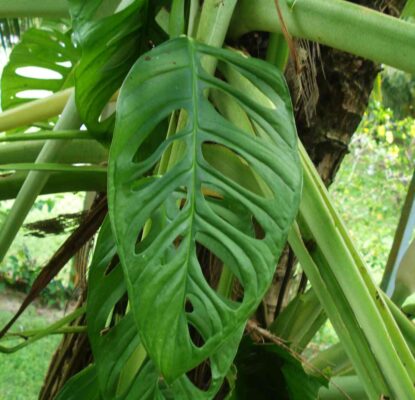
Harder to find but not impossible, the Lechleriana Schott (whew, what a mouthful) is easy to identify by its look and feel. Its an unusually large species and its leaves are much bigger and wider, with small fenestrations. Additionally, it has a thicker, leathery leaf much like the Monstera Deliciosa. In a mature plant, you’ll see that it doesn’t grow thick and bushy, but works its legs to give you long, viny stems.
Frequently Asked Questions
How do I Care for my Monstera Adansonii?
Monstera Adansonii care is almost similar across the varieties and often differs slightly in terms of light and water. To ensure healthy and thriving plants, ensure your Adansonii is potted in light, well-draining soil or pick up an aroid mix to make things easier for you. Water thoroughly and allow the soil to dry between each watering session. If you’re unsure if the soil is dry, stick your finger in the soil or use wooden stick to check. If the stick comes out dry, it’s time to water, if it has a water mark or soil sticking to it, you can wait another day or two.
Does Monstera Adansonii need direct sunlight?
No, it does not need direct sunlight, the scorching sun can burn the leaves. It needs indirect bright light for about 4-6 hours of light a day. The best spots would be in any room with a window or in a shaded porch or veranda area.
How do you keep Monstera Adansonii healthy?
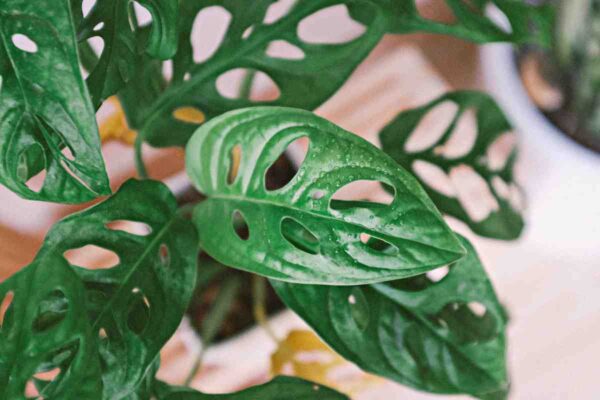
Part of your Monstera Adansonii care routine should include pruning, occasionally rotating your pot to ensure even growth, and ensuring consistency in keeping the soil moist.
Pruning: cut off leggy, sad vines to encourage new growth.
Pot rotation: if you notice your vines growing towards a certain direction, usually in the direction where the source of light is coming from, then it’s time to rotate your pot.
Consistent moisture: Monstera Adansonii loves moist soil but not soggy, wet soil. While preferences differ across varieties, the rule of thumb is to allow the soil to dry between watering and then water thoroughly.
Does Monstera Adansonii Variegata have different care requirements?
No, there are no special requirements outside of your standard Monstera Adansonii care routine. Variegated plants are able to thrive with the same light, water, soil and humidity settings as non-variegated plants. Many plant experts swear by speaking kind words to their plants, so if you notice slow growth, give the some validation!
Do Monstera Adansonii like to be misted?
Yes! As a plant native to the rainforest, this plant loves humidity and moisture. If misting is not part of your monstera adansonii care routine or you simply don’t have the time, look into other humidity options such as grouping plants together to thrive off their own humidity or using the water tray method.
Why is my Monstera Adansonii suddenly dying?
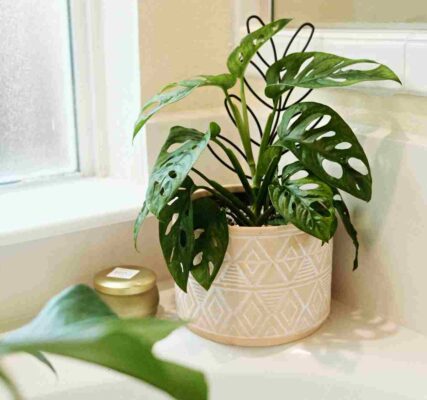
Uh-oh! There are a few reasons that will result in your plant dying. The cause is often light, water or pests. If it has insufficient light, the leaves will start browning around the edges and slowly spreading across the leaf.
Underwatering is noticeable by droopy, dry leaves and the appearance of crisp, brown spots across the leaves, often starting with the newer, younger leaves. However, overwatering is distinguished by yellowing leaves, affecting the bottom of the plant first.
Last words
When it comes to Monstera Adansonii varieties and care, the list can go on. But if you’ve come this far then you’re familiar with the to-dos in its care routine and know all the common varieties in the market! So check out your local nurseries or head on over to Etsy or Amazon to look for some to add to your collection. Come on then, let’s grow!
